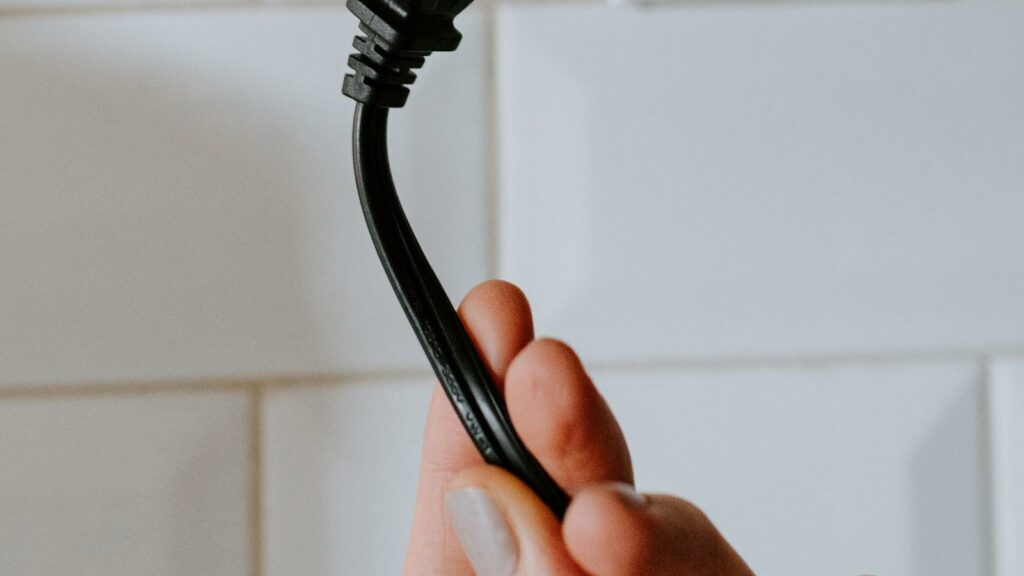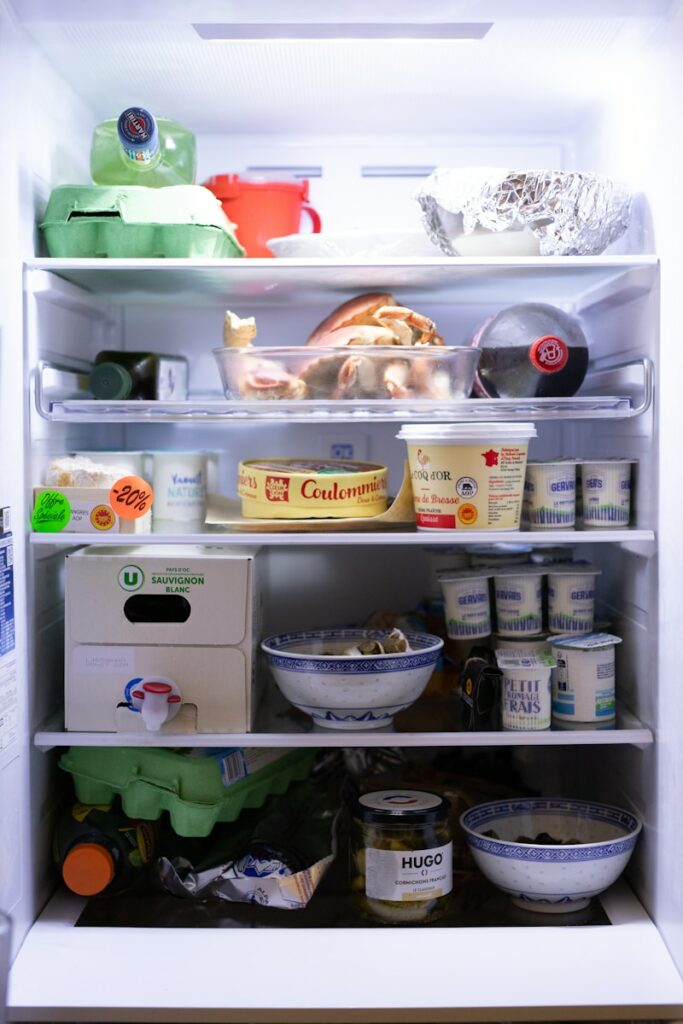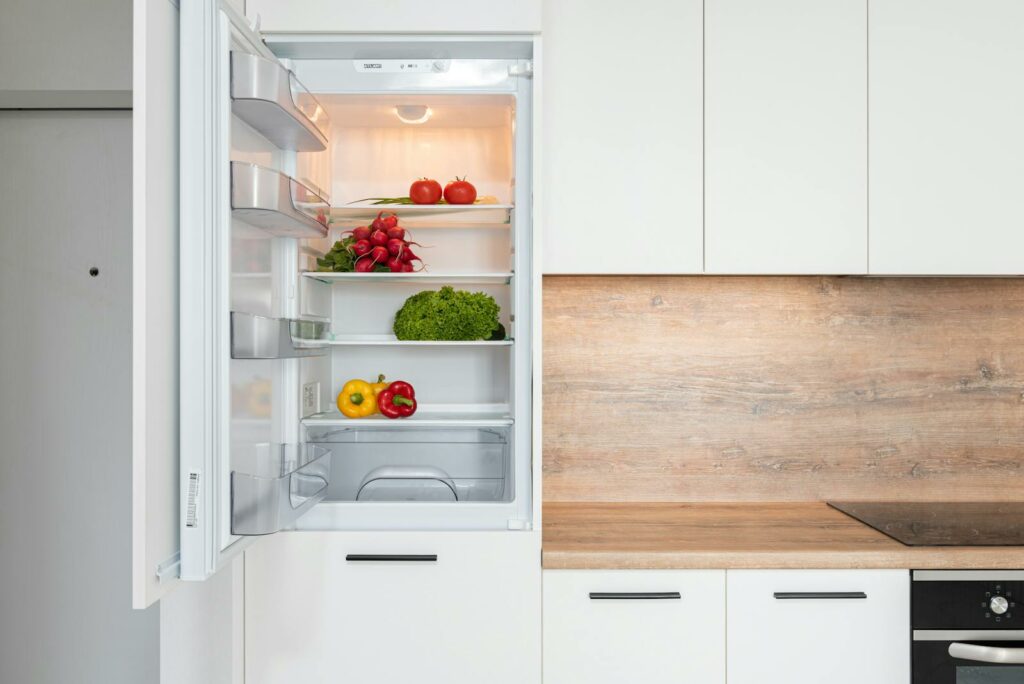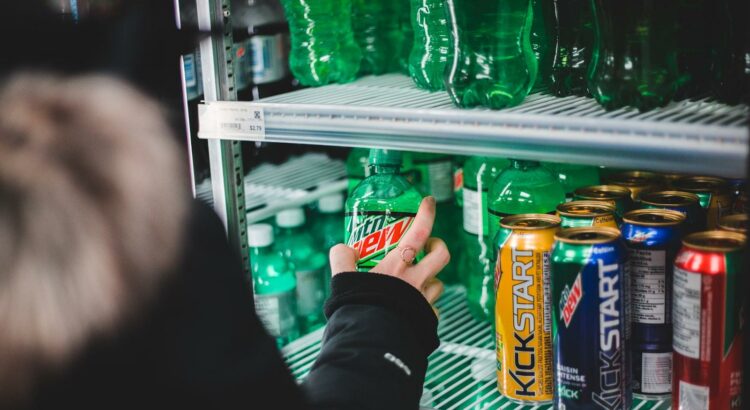Welcome to the ultimate guide to keeping your refrigerator clean and running smoothly! We all know the feeling of opening up our fridge and being hit with a less-than-pleasant odor or finding a mysterious spill on the shelves. But fear not, because with the right maintenance and cleaning routine, you can keep your refrigerator in tip-top shape. In this article, we will walk you through the steps to effectively clean and maintain your refrigerator, ensuring that your food stays fresh and your appliance stays running efficiently. Say goodbye to funky smells and hello to a sparkling clean fridge!
Table of Contents
- Unplug and Start with a Blank Canvas
- Banish Bacteria with a Baking Soda Wash
- The Secret to a Sparkling Interior: Vinegar and Hot Water
- Seal in Freshness by Cleaning Gaskets
- Defrost the Freezer for Peak Performance
- Dust Off the Condenser Coils for Efficiency
- Refresh Your Refrigerator’s Drip Pan
- Optimize Airflow by De-cluttering
- Change Filters for Fresh Water and Ice
- Schedule a Regular Date with Your Fridge
- Questions & Answers for Refrigerator Cleaning and Maintenance Guide
- Final Thoughts
Unplug and Start with a Blank Canvas

When it comes to refrigerator cleaning and maintenance, it’s important to start with a blank canvas, both figuratively and literally. Begin by unplugging your fridge to ensure safety while cleaning the interior and exterior. This will also help you see the mess and grime more clearly without the distraction of a buzzing motor. Starting with a clean slate will make the cleaning process more efficient and satisfying.
Once your refrigerator is unplugged, it’s time to remove all the items inside. Take out the shelves, drawers, and any removable parts to give yourself full access to the interior. This will allow you to clean every nook and cranny thoroughly and prevent any food residue or spills from going unnoticed. Starting with a blank canvas will make it easier to see what areas need the most attention and care.
Now that you have a blank canvas to work with, it’s time to tackle the cleaning process. Begin by wiping down the interior with a mixture of mild soap and water. Make sure to pay special attention to the areas that tend to collect the most dirt and grime, such as the shelves and drawers. Use a soft cloth or sponge to avoid scratching the surfaces. Take advantage of this opportunity to clean those hard-to-reach corners and crevices that are often overlooked during regular fridge maintenance.
After the interior is sparkling clean, don’t forget about the exterior of your refrigerator. Wipe down the doors, handles, and any exposed surfaces with a suitable cleaner to remove fingerprints, smudges, and other marks. A clean exterior not only improves the overall appearance of your fridge but also helps to prevent the buildup of dirt and grime over time. Once the cleaning process is complete, you can plug your refrigerator back in and enjoy the satisfaction of a freshly cleaned and maintained appliance.
| Pros | Cons |
|---|---|
| Starting with a blank canvas makes the cleaning process more efficient | Unplugging the refrigerator may result in the loss of stored food |
| Thorough cleaning prevents the buildup of dirt and grime | Removal of shelves and drawers can be time-consuming |
| A clean exterior improves the overall appearance of the fridge | Requires regular maintenance to keep the refrigerator clean |
| Prevents the spread of bacteria and odors |
Banish Bacteria with a Baking Soda Wash
When it comes to refrigerator cleaning and maintenance, one of the best and most natural ways to banish bacteria and odors is by using a baking soda wash. Baking soda is not only effective at eliminating germs, but it’s also safe to use around food. Here’s how to do it:
First, remove all the food items from your refrigerator. This will allow you to thoroughly clean and sanitize the interior without any obstacles in the way.
Next, mix a solution of 1 tablespoon of baking soda to 1 quart of warm water. Stir the solution until the baking soda is completely dissolved.
Using a clean cloth or sponge, dip it into the baking soda solution and start wiping down the interior walls, shelves, and drawers of your fridge. Make sure to pay extra attention to any areas where spills or stains are present.
Once you’ve wiped down all the surfaces, rinse the cloth or sponge with clean water and go over everything again to remove any remaining baking soda residue. Then, dry the interior with a clean towel before putting the food back in.
By regularly using a baking soda wash to clean your refrigerator, you can keep bacteria at bay and ensure that your fridge remains fresh and odor-free. This simple and natural method is a must for fridge maintenance, and it’s a great alternative to harsh chemical cleaners.
To make the process easier, you can also place an open box of baking soda in the back of your refrigerator to continuously absorb odors. This can help to maintain a clean and fresh-smelling fridge between cleanings. Whether you’re doing a deep clean or just tackling everyday spills, using baking soda is an effective and safe way to keep your refrigerator in tip-top shape. Try it out and see the difference for yourself!
The Secret to a Sparkling Interior: Vinegar and Hot Water
Cleaning your refrigerator is essential for maintaining a hygienic environment for your food. One effective and natural way to clean the interior of your fridge is by using a solution of vinegar and hot water. Not only is this method eco-friendly, but it also helps to eliminate odors and bacteria, leaving your fridge sparkling clean.
To create the cleaning solution, mix equal parts of vinegar and hot water in a spray bottle. Vinegar is a natural disinfectant and is effective at cutting through grease and grime. The hot water helps to loosen any stubborn dirt and food residues.
Once you have your solution ready, follow these steps for a thorough refrigerator cleaning and maintenance:
- Start by removing all the items from your fridge and placing them in a cooler to keep them chilled.
- Take out the shelves, drawers, and other removable parts and soak them in the vinegar and hot water solution.
- Wipe down the interior of the fridge with the solution, paying special attention to areas with spills and stains.
- Rinse and dry the shelves and drawers before placing them back into the fridge.
By using this simple yet effective cleaning method, you can ensure that your refrigerator is not only clean but also well-maintained. Regular refrigerator cleaning and maintenance will prolong the life of your appliance and keep it in top working condition. Plus, with the natural ingredients of vinegar and hot water, you can say goodbye to harsh chemical cleaners, making it safe for you and your family.
In summary, when it comes to refrigerator cleaning and maintenance, the secret to a sparkling interior lies in the power of vinegar and hot water. This natural cleaning solution is gentle yet effective, ensuring that your fridge is clean and hygienic without the use of harsh chemicals. Give it a try and see the difference for yourself!
Seal in Freshness by Cleaning Gaskets
One of the most important aspects of refrigerator cleaning and maintenance is making sure the gaskets are clean and sealing properly. The gaskets are the rubber seals that line the edges of the refrigerator and freezer doors, ensuring that cold air stays in and warm air stays out. Here’s how to effectively clean and maintain these essential components of your fridge:
Step 1: Remove and Inspect Gaskets
The first step in cleaning gaskets is to carefully remove them from the doors. Inspect them for any tears, cracks, or signs of wear and tear. If you notice any damage, it’s important to replace the gaskets to maintain the integrity of your refrigerator.
Step 2: Wash Gaskets Thoroughly
Using a mild detergent and warm water, thoroughly wash the gaskets to remove any dirt, grime, and food particles. Be sure to pay extra attention to the folds and crevices where debris can accumulate. Rinse the gaskets with clean water and allow them to fully dry before reattaching them to the doors.
Step 3: Apply Silicone Lubricant
After cleaning and drying the gaskets, it’s a good idea to apply a thin layer of silicone lubricant to keep them pliable and ensure a proper seal. This will help extend the life of the gaskets and maintain the efficiency of your refrigerator.
By following these simple steps to clean and maintain the gaskets on your refrigerator, you can ensure that they seal in the freshness and keep your food at the optimal temperature. Regular refrigerator cleaning and fridge maintenance will not only prolong the life of your appliance but also help it run more efficiently, saving you money on energy costs in the long run.
Defrost the Freezer for Peak Performance
When it comes to refrigerator cleaning and maintenance, defrosting the freezer is a crucial step for ensuring peak performance. Over time, ice build-up can hinder the efficiency of your freezer, causing it to work harder and consume more energy. To avoid this, it’s important to defrost your freezer regularly. Here’s a step-by-step guide on how to defrost your freezer and keep it running smoothly.
Step 1: Prepare the Freezer
Before you begin, remove all food items from the freezer and store them in a cooler to keep them cold. Next, unplug the refrigerator to ensure safety during the defrosting process. Place towels or old newspapers around the base of the freezer to catch any water that may drip during the defrosting.
Step 2: Defrost the Freezer
To defrost the freezer, leave the door open and allow the ice to melt naturally. You can speed up the process by placing bowls of hot water inside the freezer or using a hairdryer on a low setting to gently melt the ice. Avoid using sharp objects to chip away at the ice, as this can damage the freezer.
Step 3: Clean and Dry the Freezer
Once all the ice has melted, use a mixture of mild soap and warm water to clean the interior of the freezer. Wipe down all surfaces, including the walls, shelves, and drawers. Then, thoroughly dry the freezer with a clean towel to prevent any remaining moisture from refreezing.
Step 4: Plug in the Refrigerator
After the freezer is completely dry, plug the refrigerator back in and wait for it to reach the desired temperature before returning the food items to the freezer. Regularly defrosting your freezer not only helps maintain its performance, but also prolongs the life of your refrigerator, saving you money on repairs and energy costs in the long run.
Dust Off the Condenser Coils for Efficiency
When it comes to refrigerator cleaning and maintenance, one of the most important tasks is to regularly dust off the condenser coils. Over time, these coils can accumulate dust and dirt, which can greatly reduce the efficiency of your fridge. Luckily, this is a fairly simple task that can be done with just a few tools and a little bit of time.
To get started, locate the condenser coils on your refrigerator. These are typically located on the back or bottom of the appliance. Once you’ve found them, use a vacuum cleaner with a brush attachment to gently remove any dust and debris. Be sure to be thorough and get into all the nooks and crannies. It’s also a good idea to use a coil brush to further clean the coils.
After you’ve thoroughly cleaned the coils, take a moment to inspect the surrounding area for any other dirt or debris. It’s important to keep the entire refrigerator clean, as this will help it run more efficiently and prolong its lifespan. Additionally, consider pulling the fridge away from the wall and cleaning any dust and dirt that may have accumulated behind and underneath it.
In addition to cleaning the condenser coils, it’s important to regularly check and replace the refrigerator’s water filter, clean the door seals, and ensure the temperature settings are correct. By staying on top of refrigerator cleaning and maintenance, you can ensure your fridge continues to run efficiently and effectively for years to come.
Refresh Your Refrigerator’s Drip Pan

So you’ve tackled the shelves, drawers, and exterior of your fridge, but have you ever thought about cleaning the drip pan? This often-overlooked component plays a crucial role in keeping your refrigerator running efficiently. Over time, it can become clogged with dirt, food particles, and mold, leading to unpleasant odors and potential leaks.
It’s time to give your fridge the TLC it deserves and refresh its drip pan!
- To begin, locate the drip pan. It’s usually found at the bottom of the refrigerator, beneath the grill. Once you’ve found it, follow these simple steps to clean and maintain it:
Remove the grill: Carefully pull out the grill located at the base of your refrigerator. This will provide you with access to the drip pan.Empty the drip pan: If there’s any liquid in the drip pan, carefully pour it down the sink. Be cautious, as the liquid may be dirty or have a foul odor.
Clean the drip pan: Use warm, soapy water to thoroughly clean the drip pan. You may also need to use a brush or sponge to scrub away any stubborn residue. Don’t forget to clean the surrounding area as well.
Replace the grill: Once the drip pan is clean and dry, carefully slide the grill back into place at the bottom of the refrigerator. Make sure it’s securely positioned.
Regularly refreshing your refrigerator’s drip pan is an essential part of fridge maintenance. By keeping it clean, you can prevent the buildup of mold and bacteria, minimize odors, and ensure that your fridge continues to operate efficiently. So next time you’re cleaning the interior of your refrigerator, don’t forget to show some love to the drip pan!
Optimize Airflow by De-cluttering

When it comes to refrigerator cleaning and fridge maintenance, one of the most important things you can do is to optimize airflow by de-cluttering your fridge. Over time, it’s easy for the inside of your refrigerator to become cluttered with half-empty bottles, expired condiments, and forgotten leftovers. Not only does this clutter make it difficult to find what you need, but it can also disrupt the airflow, leading to uneven cooling and potential food spoilage.
To de-clutter your fridge and optimize airflow, follow these steps:
- Remove Everything: Start by taking everything out of your refrigerator. This allows you to see what you have and make decisions about what to keep and what to toss.
- Check Expiry Dates: Take the time to check the expiry dates on all of your condiments, sauces, and other items. Toss anything that is expired or unlikely to be used.
- Clean Shelves and Drawers: While the inside of your fridge is empty, take the opportunity to clean the shelves and drawers with a mild detergent and warm water.
- Organize Items: As you put the items back into your fridge, organize them in a way that maximizes airflow. This may involve using clear containers or bins to group items together and keep things neat and organized.
By de-cluttering and organizing your fridge, you’ll not only optimize airflow and ensure even cooling, but you’ll also make it easier to find what you need and reduce the risk of food spoilage. Implementing this simple step as part of your regular refrigerator cleaning and maintenance routine can go a long way in keeping your fridge running efficiently and your food fresh for longer.
Change Filters for Fresh Water and Ice

When it comes to refrigerator cleaning and fridge maintenance, don’t forget about the importance of changing the filters for fresh water and ice. Over time, these filters can become clogged with debris and impurities, affecting the quality of your water and ice. Here’s a step-by-step guide to help you keep your filters fresh and your water and ice clean.
First, determine what type of filters your refrigerator uses. There are usually two types: one for the water dispenser and one for the ice maker. Check your refrigerator’s manual or look up the model online to find the specific filters you need.
Once you have the filters, it’s time to replace them. Most filters are located in the grille at the bottom of the refrigerator or inside the refrigerator compartment. Consult your manual for the exact location and instructions for removal and replacement.
To remove the old filters, simply twist them counterclockwise and pull them out. Be sure to have a towel or container handy to catch any water that may spill out. Then, insert the new filters and twist them clockwise to lock them in place.
Finally, run a few cups of water through the dispenser to flush out any air bubbles and activate the new filters. This will ensure that you have fresh, clean water and ice for drinking and cooking. Don’t forget to mark your calendar or set a reminder to change the filters again in six months to maintain optimal performance.
Remember, keeping your filters fresh is an essential part of refrigerator cleaning and maintenance that ensures the quality of your water and ice. By following these simple steps, you can enjoy clean, refreshing beverages straight from your fridge all year round.
Schedule a Regular Date with Your Fridge

Alright, let’s get real for a second. How often do you actually clean your refrigerator? If you’re anything like me, it’s probably not as often as you should. But fear not, because I’m here to guide you through the process of refrigerator cleaning and maintenance, and show you why it’s so important to .
Cleaning Your Fridge
When it comes to refrigerator cleaning, it’s important to do a deep clean at least once a month. Start by removing all the food from your fridge and then follow these steps:
- Take out all the shelves and drawers and wash them with warm, soapy water.
- Use a mixture of water and baking soda to wipe down the inside of the fridge, paying extra attention to any spills or stains.
- Don’t forget to clean the rubber door seals and the exterior of the fridge as well.
- Once everything is dry, put the shelves and drawers back in and voila – a sparkling clean fridge!
Fridge Maintenance
In addition to regular cleaning, it’s important to keep up with fridge maintenance to ensure it stays in top shape. Here are a few maintenance tasks you should add to your schedule:
- Check the door seals for any signs of wear and tear, and replace them if necessary.
- Vacuum the condenser coils every 3-6 months to remove any dust or debris that could affect the fridge’s efficiency.
- Keep an eye on the temperature settings and make sure the fridge is running at the optimal temperature to keep your food fresh.
By following these refrigerator cleaning and maintenance tips, you’ll not only keep your fridge looking and smelling great, but you’ll also extend its lifespan and save on energy costs. So, go ahead and schedule that regular date with your fridge – it’ll thank you for it!
Questions & Answers for Refrigerator Cleaning and Maintenance Guide
How often should I clean my refrigerator?
It’s recommended to clean your refrigerator at least once every three months to prevent any build-up of dirt, bacteria, and odors.
What is the best way to clean the inside of my refrigerator?
Start by removing all the items from your fridge, then use a mixture of warm water and mild detergent to wipe down the shelves, drawers, and walls.
How do I clean the exterior of my refrigerator?
For the exterior, a simple solution of warm water and dish soap is usually sufficient. Pay special attention to the handles, which can harbor a lot of germs and dirt.
Can I use vinegar to clean my refrigerator?
Yes, vinegar is a great natural cleaning agent that can be used to clean and deodorize your refrigerator. Mix equal parts of water and vinegar for an effective cleaning solution.
What is the best way to prevent odors in my refrigerator?
Regularly clean out expired or spoiled food, and place an open box of baking soda inside to absorb any lingering odors. You can also use activated charcoal to absorb odors.
How often should I replace the water filter in my refrigerator?
It’s recommended to replace the water filter in your refrigerator every six months to ensure that it continues to provide clean and safe drinking water.
What are some tips for organizing my refrigerator?
Keep like items together, use clear containers for leftovers, and invest in some refrigerator organizers like bins and trays to help maximize space and keep things neat.
How can I maintain the efficiency of my refrigerator?
Regularly vacuum and clean the condenser coils at the back or bottom of your fridge to ensure that it runs efficiently. Also, check the door seals for any signs of wear or damage.
Is it important to defrost my refrigerator and freezer regularly?
Yes, defrosting your refrigerator and freezer regularly can help maintain their efficiency and prevent ice build-up, which can lead to a decrease in cooling performance.
What should I do if my refrigerator is making strange noises?
If your refrigerator is making unusual noises, such as rattling or buzzing, it could be a sign that something is wrong. It’s best to call a professional to have it inspected and repaired.
Final Thoughts
So there you have it, folks! With these tips and tricks, maintaining and cleaning your refrigerator will be a breeze. Remember, a clean and well-maintained fridge not only keeps your food fresh and safe to eat, but it also extends the life of your appliance. Take the time to give your refrigerator the attention it deserves, and you’ll surely benefit from it in the long run.
